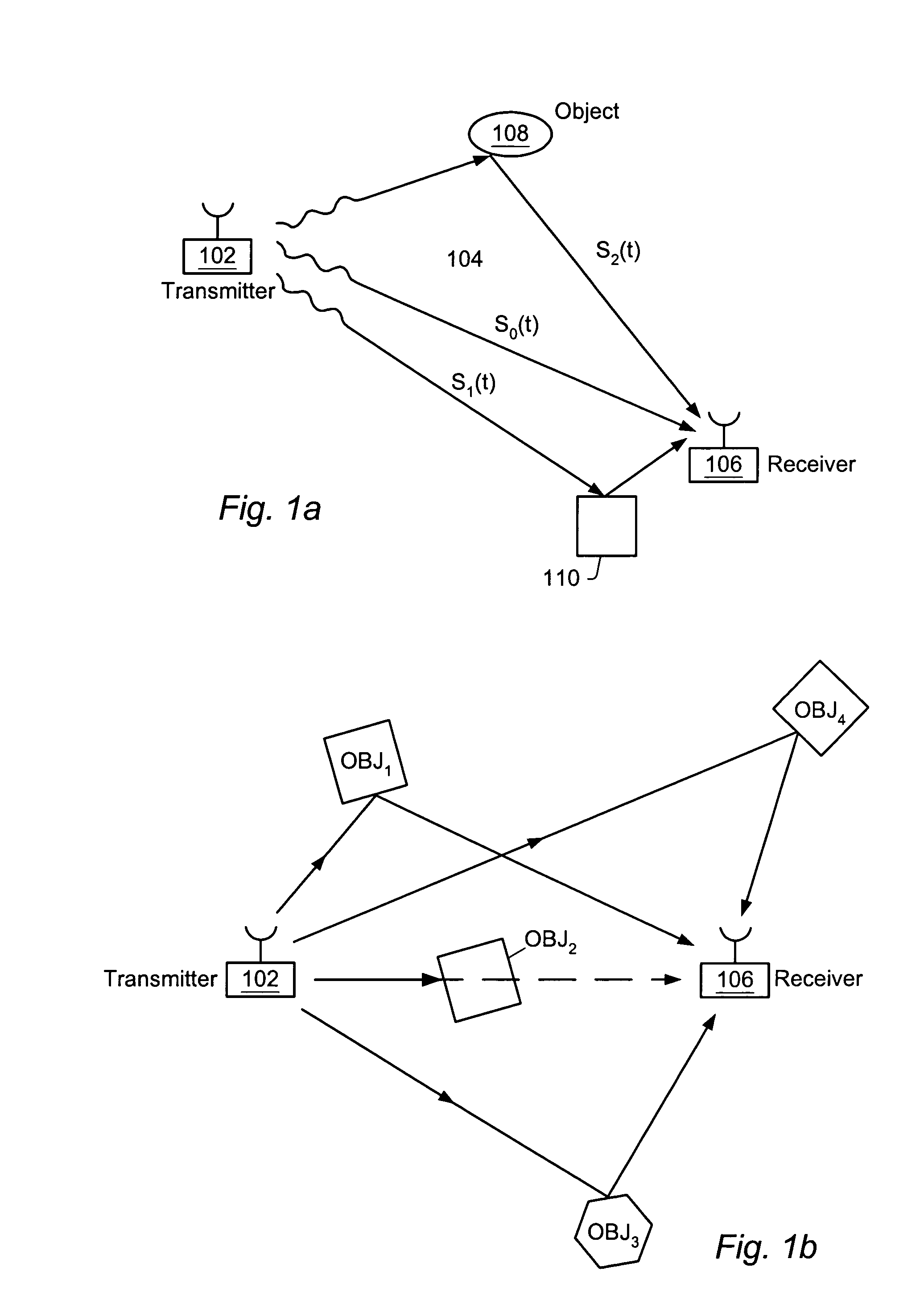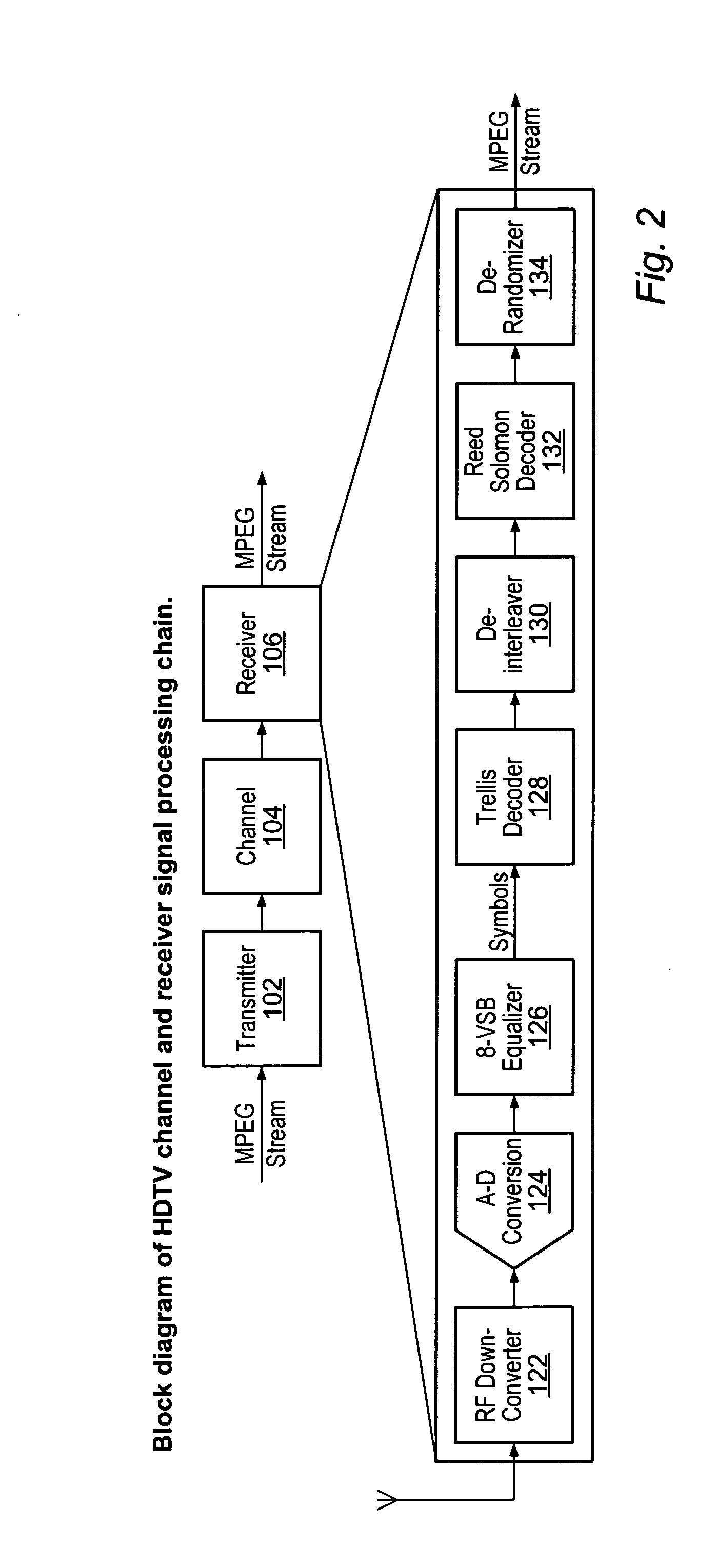Frequency domain equalization of communication signals
a technology of communication signals and frequency domains, applied in the field of digital telecommunication, can solve problems such as noise in the signal, multi-path distortion of the transmitted signal, typical distortion of the tv channel, etc., and achieve the effect of greater time separation
- Summary
- Abstract
- Description
- Claims
- Application Information
AI Technical Summary
Benefits of technology
Problems solved by technology
Method used
Image
Examples
Embodiment Construction
[0045] FIGS. 1A-B: Communication System FIGS. 1A and 1B illustrate an exemplary communication system including a transmitter 102, a channel 104, and a receiver 106. As shown, the transmitter 102 may generate a signal which is intended to be received by the receiver 106. The signal generated by the transmitter 102 propagates through the channel 104 and is received by the receiver 106. As shown in FIG. 1A, as the signal propagates through the channel 104, the signal may experience various types of multipath distortion, including reflections from the ground or from various objects such as objects 108 and 110. Examples of various types of objects that can introduce multipath distortion include buildings, homes, vehicles, airplanes, and natural phenomena such as non-level terrain, trees, etc. This multipath distortion may result in various echoes being received by the receiver 106.
[0046]FIG. 1B suggests that a direct path between the transmitter and receiver may be occluded. Thus, the “...
PUM
 Login to View More
Login to View More Abstract
Description
Claims
Application Information
 Login to View More
Login to View More - R&D
- Intellectual Property
- Life Sciences
- Materials
- Tech Scout
- Unparalleled Data Quality
- Higher Quality Content
- 60% Fewer Hallucinations
Browse by: Latest US Patents, China's latest patents, Technical Efficacy Thesaurus, Application Domain, Technology Topic, Popular Technical Reports.
© 2025 PatSnap. All rights reserved.Legal|Privacy policy|Modern Slavery Act Transparency Statement|Sitemap|About US| Contact US: help@patsnap.com



